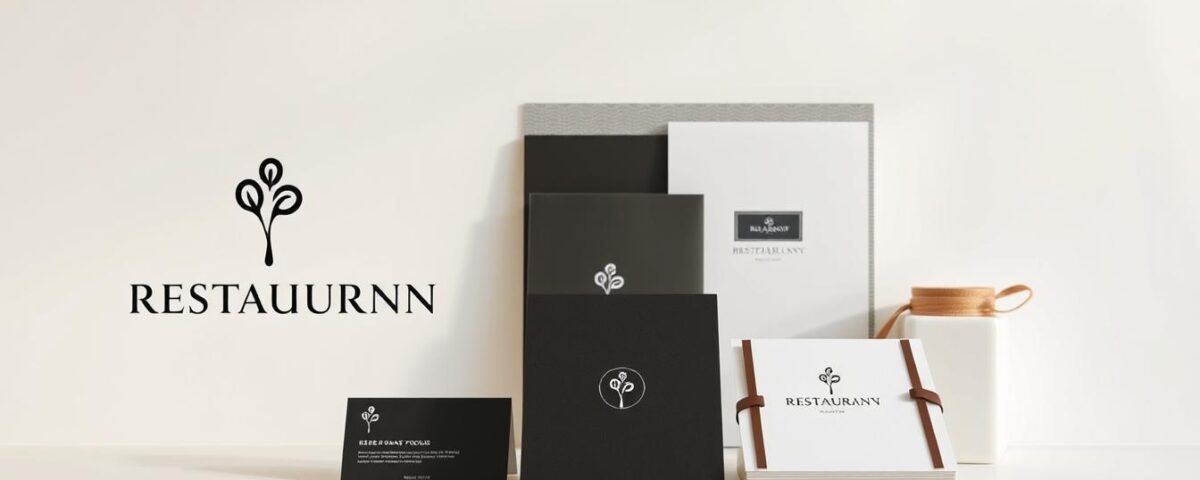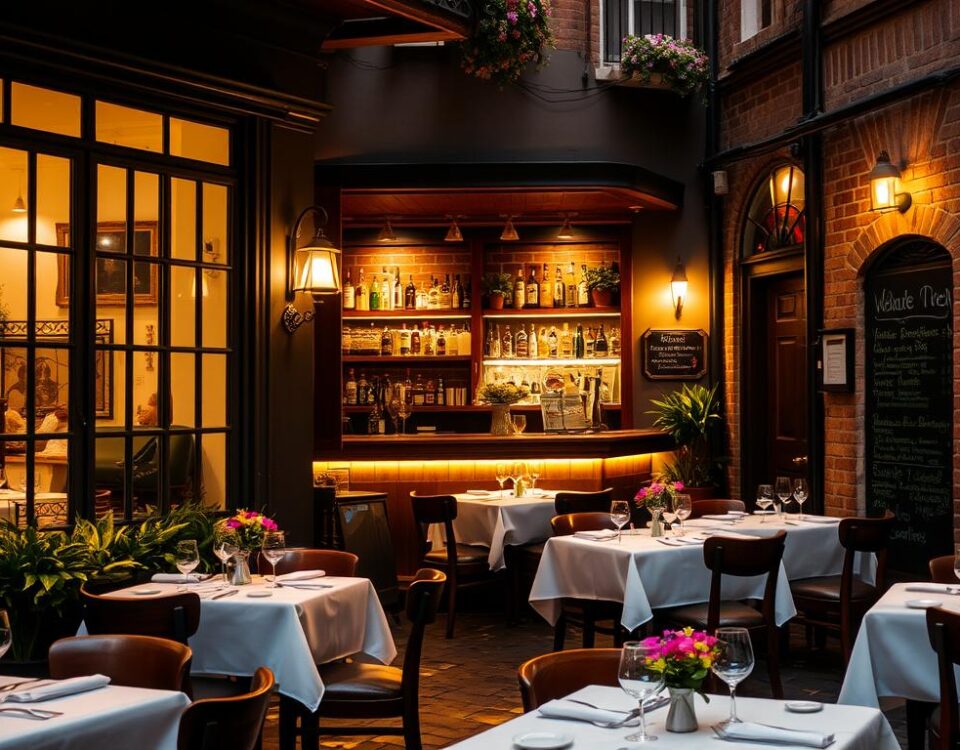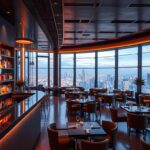
How to Capitalize on 2025 Restaurant Trends Before Competitors Do
August 29, 2025
6 Common Supplier Traps That Are Costing You Thousands
August 30, 2025I’ve seen many restaurants struggle to establish a clear identity, despite serving great food. This often leads to confusion among customers and staff alike. A well-defined brand identity is crucial for standing out in today’s competitive market.
Surprisingly, many restaurant owners focus solely on food quality while neglecting their overall concept. This oversight can lead to a lack of cohesion and a weakened brand. So, what are the critical mistakes that can damage a restaurant’s identity?
Understanding these pitfalls early can save you significant time, money, and heartache in your restaurant journey. In this article, I’ll share insights on how to recognize and avoid common mistakes that can undermine your brand identity.
Key Takeaways
- Clearly define your restaurant’s concept to avoid confusion.
- Ensure consistency in branding across all platforms.
- Understand your target audience to tailor your brand identity.
- Avoid neglecting staff training on brand identity.
- Regularly assess and adjust your brand strategy.
Why Restaurant Concept Matters for Long-Term Success
In the highly competitive restaurant market, a strong concept is key to standing out. A well-defined restaurant concept serves as the foundation for everything from menu design to marketing strategy, ultimately driving business success.
The Link Between Concept and Brand Identity
A restaurant’s concept is intricately linked with its brand identity. When the concept and brand identity align perfectly, customers understand exactly what the restaurant offers and why they should choose it over competitors. This alignment is crucial for building customer loyalty and creating a cohesive customer experience. A clear concept guides all business decisions, from hiring to menu development, ensuring a consistent brand image.
How Concept Mistakes Lead to Restaurant Failure
Concept mistakes can lead to restaurant failure by creating disconnects between what owners envision and what customers experience. Approximately 60% of restaurants fail within their first three years, often due to concept inconsistencies. Without a clear concept, restaurants struggle to build customer loyalty and often resort to competing solely on price rather than unique value. Maintaining a laser focus on the concept throughout all aspects of the business is crucial for long-term success.
- A well-defined concept guides menu design and marketing strategy.
- Concept and brand identity alignment is key to customer loyalty.
- Concept mistakes can lead to restaurant failure due to inconsistencies.
My Experience with Restaurant Concept Development
I’ve worked with dozens of restaurant owners, and through these experiences, I’ve identified common pitfalls that can make or break a restaurant’s identity.
My work involves understanding the intricacies of restaurant concept development, where I’ve seen firsthand how mistakes in the initial stages can lead to long-term issues.
Lessons Learned from Working with Restaurant Owners
- Many owners start with a personal passion but fail to translate that into a concept that resonates with their target market.
- The most successful concept developments involve extensive market research before finalizing design or menu decisions.
Through my experience, I’ve learned that taking the time to get the concept right is crucial.
The Most Common Concept Pitfalls I’ve Witnessed
- Concept inconsistency is a common issue, where the menu, decor, service style, and pricing tell different stories about the restaurant.
- Restaurant owners often rush through concept development, only to face identity issues later on.
By understanding these pitfalls, owners can better navigate the complex process of developing a successful restaurant concept.
Mistake #1: Inconsistent Branding and Unclear Vision
In my experience, one of the most significant mistakes restaurant owners make is neglecting to develop a clear and consistent brand vision. At the root of any great brand is a compelling story that resonates with customers and staff alike. However, when a leader tries to impose their passions on their team without clearly articulating the vision, it can lead to confusion and a lack of cohesion.
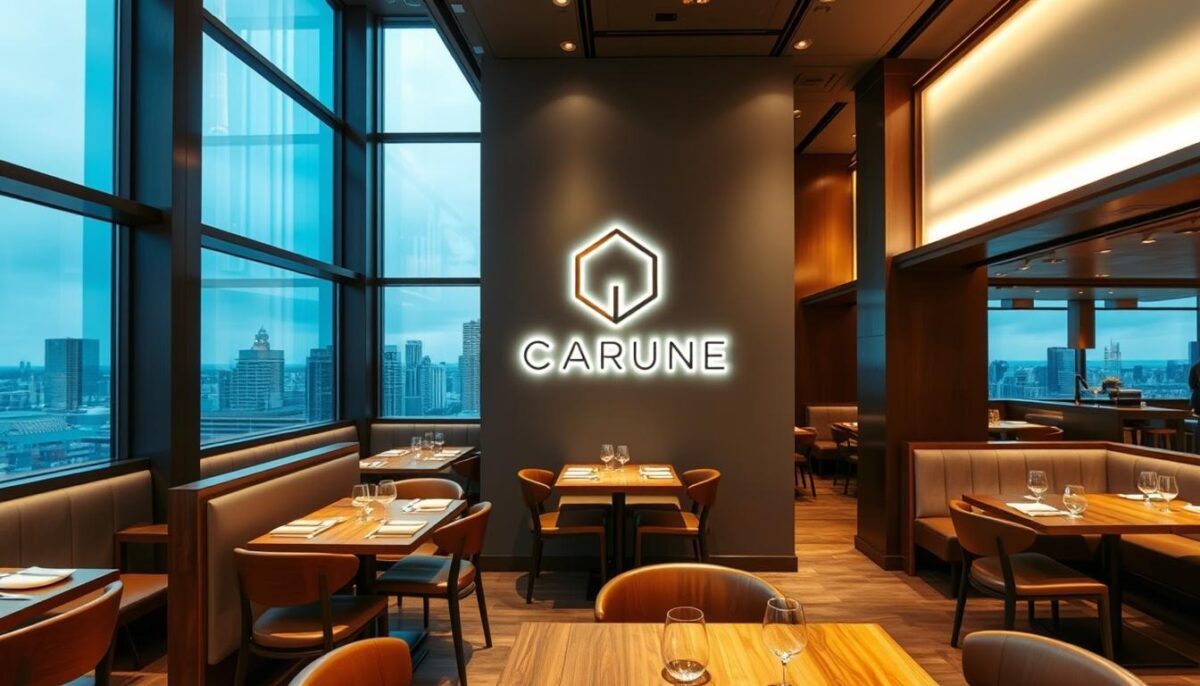
Signs Your Restaurant Lacks Brand Cohesion
I’ve walked into too many restaurants where the menu, interior design, staff uniforms, and marketing materials all seem to belong to different businesses—this inconsistency confuses customers about what to expect. The most obvious sign of brand inconsistency I look for is when staff members give different answers about what makes the restaurant special. Unclear vision often stems from restaurant owners who haven’t documented their concept beyond a general food category or cuisine type.
How to Develop a Strong Brand Roadmap
I always recommend creating a comprehensive brand roadmap that clearly articulates your restaurant’s story, values, target audience, and unique selling proposition. When developing a strong brand roadmap, I encourage owners to involve their team in the process—this creates buy-in and ensures the vision is realistic and executable. The most successful restaurant brands I’ve helped develop have a clear “why” behind their existence that goes beyond just serving food or making money.
Mistake #2: Following Trends Instead of Creating Your Own Lane
The allure of trendy concepts can be strong, but I’ve learned that it’s often more beneficial to forge your own path in the restaurant industry. Trends will come and go, and while it’s tempting to jump on the bandwagon, doing so can lead to a crowded and competitive market.
The Danger of Being Seen as an Imitator
When you follow a trend, you’re likely to be seen as an imitator rather than a pioneer. I’ve watched numerous restaurant owners jump on food trends, only to find themselves in a crowded market with nothing distinctive to offer. This can lead to a struggle to command premium prices and a reliance on competing solely on convenience or cost.
Finding Your Unique Position in the Market
To stand out, it’s essential to identify gaps in the market and create a unique position for your restaurant. I encourage restaurant owners to ask themselves: “If this trend fades, what will still make our restaurant relevant and desirable to customers?” By focusing on what sets your business apart, you can build a loyal customer base and establish a strong brand identity. This might involve combining familiar elements in unexpected ways or bringing something from another region that hasn’t yet saturated your local market.
By creating your own lane, you’ll be better positioned to attract and retain customers, ultimately driving long-term success for your restaurant business.
Mistake #3: Neglecting Your Target Customer
One of the most critical errors restaurant owners make is neglecting their target customer. As a consultant, I’ve seen many restaurateurs focus so much on their restaurant concept that they forget to consider who their customers will be and how to attract them.

The phrase “if you build it, they will come” is a dangerous misconception in the restaurant business. It’s a mentality that can lead to failure, even with a beautiful restaurant and excellent food. To avoid this, it’s essential to understand your target customer and create a tailored experience.
Why “If You Build It, They Will Come” Doesn’t Work
The “if you build it, they will come” mentality is a recipe for disaster in the restaurant industry. Many restaurant owners create concepts based on personal preferences without considering market demand. As I always advise, understanding your customer is key to a successful business strategy.
For instance, I’ve consulted with restaurant owners who have created concepts without considering whether there’s actual market demand. This oversight can lead to a failed business, despite having excellent food and a beautiful restaurant.
How to Define and Attract Your Ideal Customer
To define and attract your ideal customer, you need to create detailed customer personas that include demographics, psychographics, values, lifestyle choices, dining habits, and pain points. This information should influence everything from your location selection to your menu pricing and operating hours.
As I encourage restaurant owners to do, physically going where your target customers spend time and engaging with them directly can provide valuable insights. By starting with the customer in mind and working backward, you can create an experience tailored to their needs and desires.
By understanding your target customer, you can develop a clear plan to get them excited about your restaurant. As the saying goes, “Know thy customer.” This knowledge is crucial for a successful restaurant business.
Mistake #4: Poor Restaurant Design Decisions
Restaurant design is more than just aesthetics; it’s about creating an experience that keeps guests coming back. As a crucial aspect of the dining experience, the design of a restaurant can significantly impact customer satisfaction and loyalty.
A well-designed restaurant can elevate the dining experience, while a poorly designed one can deter customers. One of the key challenges is achieving the right balance in terms of lighting, acoustics, and traffic flow.
Acoustics, Lighting, and Traffic Flow Issues
Poor acoustics can lead to a dining area that is either too quiet or too loud, affecting the overall ambiance. Lighting is also crucial, as it can influence the mood and comfort of customers. “Over lighting can be an absolute mood killer,” says Joy Dayaw, associate at MG2 Design. Furthermore, a cluttered or confusing layout can disrupt the flow of customers and staff, leading to a negative experience.
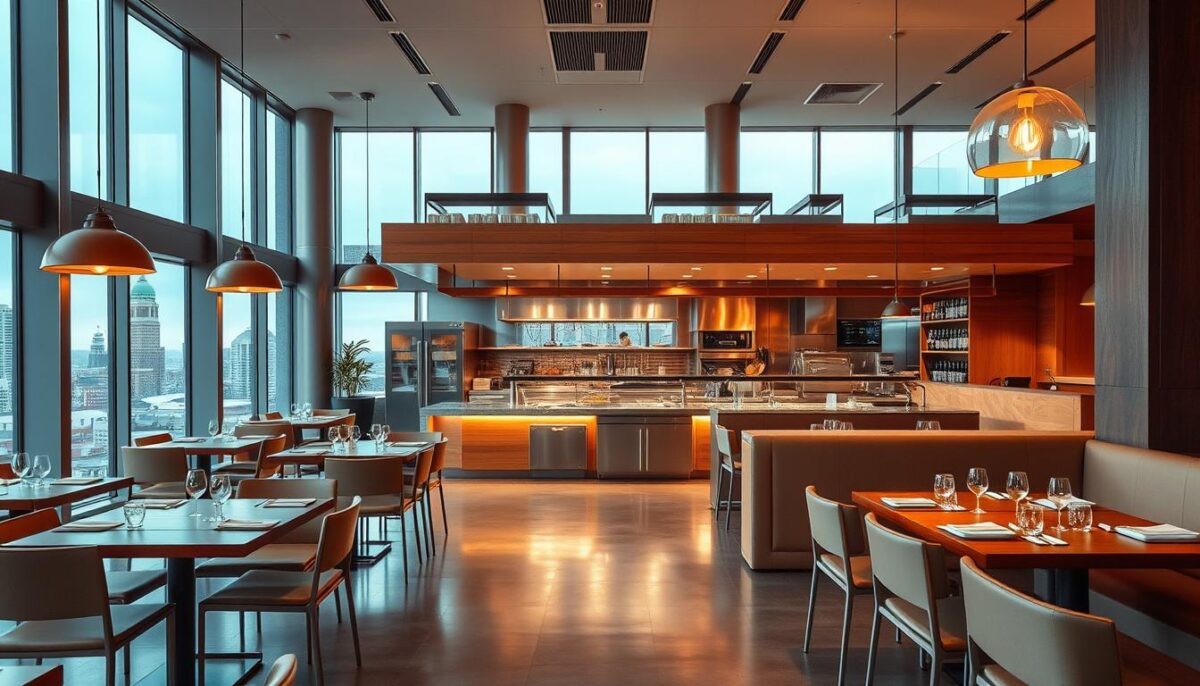
Design Elements That Enhance Customer Experience
To create a positive dining experience, restaurant owners should consider incorporating design elements that promote comfort and efficiency. This includes using sound-absorbing materials, optimizing space for smooth traffic flow, and employing thoughtful lighting design. By doing so, restaurants can enhance the overall experience for their guests, encouraging repeat visits and positive word-of-mouth.
Effective design can make a significant difference in a restaurant’s success, ultimately impacting the bottom line. By understanding the importance of design and its impact on the customer experience, restaurant owners can make informed decisions to create a welcoming and memorable space for their customers.
Mistake #5: Overly Complicated Menu Concepts
I’ve seen many restaurants struggle with menu complexity, which can dilute their brand and confuse customers. A menu that tries to be everything to everyone often ends up pleasing no one.
When a menu becomes too complicated, it can overwhelm customers, leading to a poor initial impression and potentially causing them to choose something they didn’t initially come for. To avoid this, it’s crucial to stick to your niche and focus on being the leader in providing that specific style of food and atmosphere.
When Menu Complexity Hurts Your Identity
Menu complexity often creeps in gradually, with restaurants continuously adding items based on random customer requests until their identity becomes muddled. I’ve reviewed countless restaurant menus that attempt to offer a wide variety of dishes, from pasta to sushi to burgers, which dilutes the concept and strains the kitchen.
- The most successful restaurant concepts have menus that tell a cohesive story, with each dish clearly belonging to the same culinary family.
- When evaluating menus, I look for redundant items, dishes that require unique ingredients used nowhere else, and offerings that don’t align with the restaurant’s core concept.
Balancing Creativity with Customer Expectations
The ideal menu balances creativity with familiarity. I encourage chefs to include some innovative signature dishes alongside approachable options that make guests feel comfortable.
| Menu Characteristics | Benefits |
|---|---|
| Focused menu | Higher profit margins, consistent food quality |
| Cohesive culinary family | Stronger brand recognition, customer loyalty |
| Balanced creativity and familiarity | Customer satisfaction, repeat business |
By focusing on a simple, well-crafted menu, restaurants can enhance their identity, improve customer satisfaction, and ultimately drive success.
How to Audit Your Restaurant Concept for Success
A thorough concept audit can help restaurant owners identify areas for improvement and optimize their business strategy. This process involves evaluating various aspects of your restaurant to ensure they align with your overall brand identity and business goals.
Key Questions to Ask About Your Restaurant’s Identity
When auditing your restaurant concept, it’s essential to ask the right questions. Start by assessing your customer perspective: mystery shop your own restaurant or gather feedback from first-time guests about their impressions. Ask yourself, “In one sentence, what is my restaurant, and why should people care?” This exercise helps clarify your brand identity and ensures it resonates with your target audience.
- What are the core values that define my restaurant’s brand?
- How do my customers perceive my restaurant, and does it align with my intended identity?
When to Consider a Concept Refresh
Signs that your restaurant may need a concept refresh include declining repeat business, difficulty describing your restaurant’s identity, or finding yourself constantly explaining what you’re “trying to be.” A concept refresh doesn’t necessarily mean a complete overhaul; sometimes subtle adjustments to menu language, staff training, or marketing materials can realign your restaurant with its intended identity.
| Indicators for a Concept Refresh | Actions to Take |
|---|---|
| Declining repeat business | Re-evaluate menu offerings and customer experience |
| Difficulty describing your restaurant’s identity | Refine brand messaging and marketing materials |
| Constantly explaining what you’re “trying to be” | Simplify your concept and ensure consistency across all touchpoints |
Conclusion: Building a Restaurant Concept That Lasts
Throughout my journey working with restaurants, I’ve seen that authenticity is key to creating a lasting concept. To build a successful restaurant business, owners must avoid common mistakes that can lead to concept confusion. By staying true to your brand identity and continually evaluating your concept, you can create a restaurant that stands the test of time. This approach will simplify decision-making and increase your chances of long-term success in the competitive restaurants industry.
FAQ
What are the most common restaurant branding errors?
In my experience, I’ve seen that inconsistent branding, unclear vision, and neglecting target customers are some of the most significant branding errors that can hurt a restaurant’s identity.
How can I create a unique dining experience for my customers?
To create a unique experience, focus on developing a strong brand roadmap that reflects your values and vision. This will help you stand out in a crowded market and attract customers who resonate with your brand.
What role does menu design play in a restaurant’s overall success?
Menu design is crucial, as it can either enhance or detract from the customer experience. A well-designed menu should balance creativity with customer expectations, making it easy for customers to navigate and find dishes they love.
How often should I refresh my restaurant’s concept?
The frequency of refreshing your concept depends on various factors, including changes in the market, customer preferences, and your brand identity. Regularly assessing your concept and making adjustments as needed can help keep your restaurant relevant and competitive.
What are some key design elements that can enhance customer experience?
Some key design elements that can enhance customer experience include thoughtful acoustics, lighting, and traffic flow. By paying attention to these details, you can create a welcoming and comfortable atmosphere that makes customers feel at ease.
How can I ensure my restaurant’s branding is consistent across all channels?
To ensure consistency, develop a comprehensive branding strategy that outlines your visual identity, tone, and messaging. This will help you maintain a cohesive brand image across all touchpoints, from your website to social media and in-store experience.
